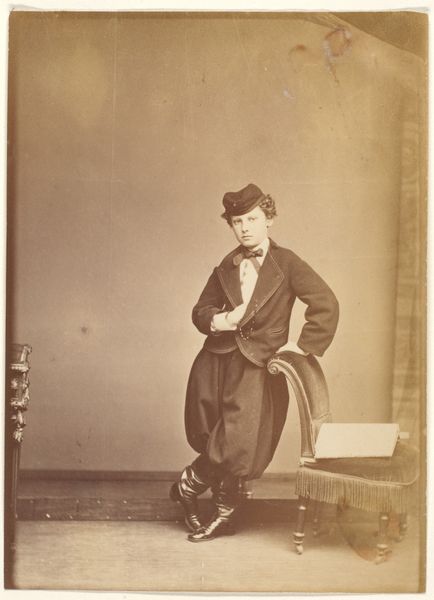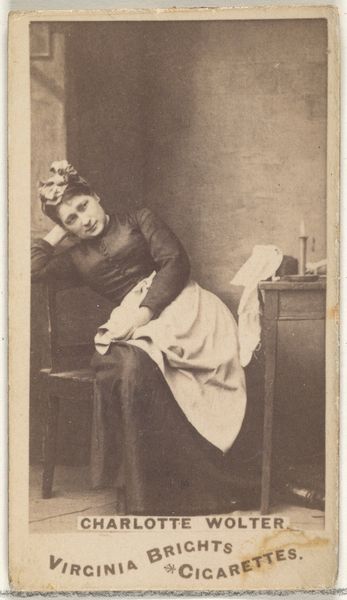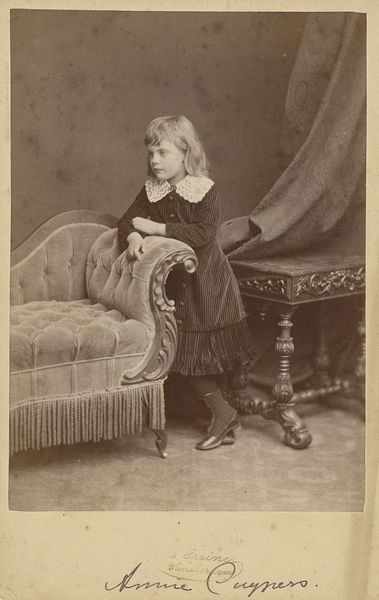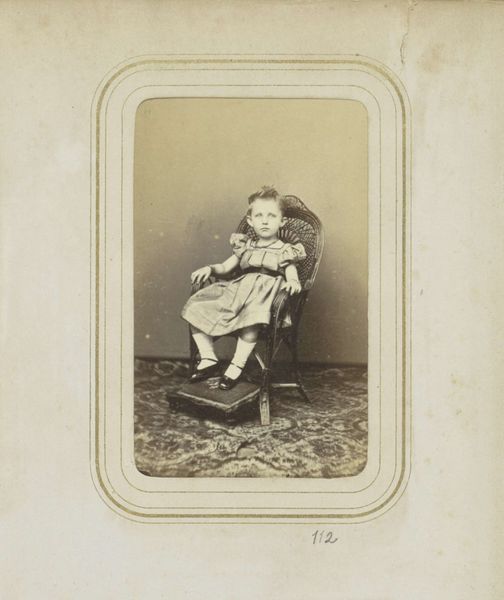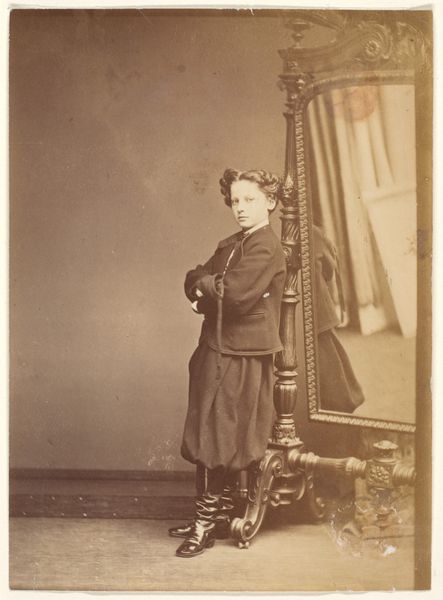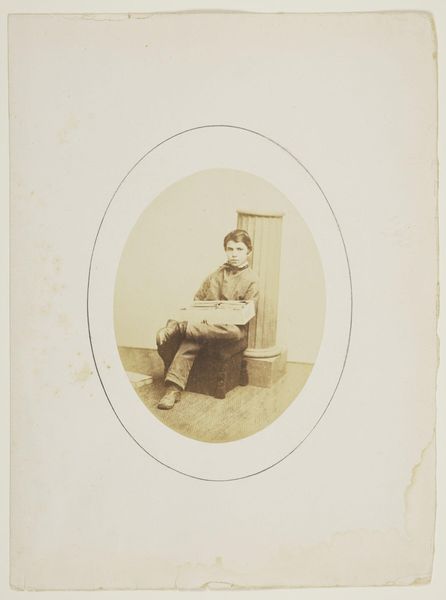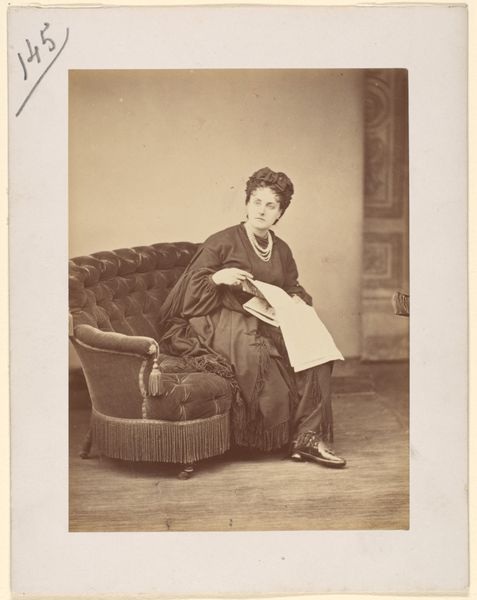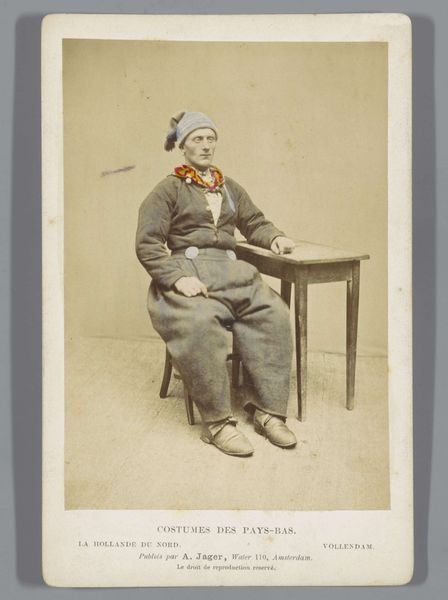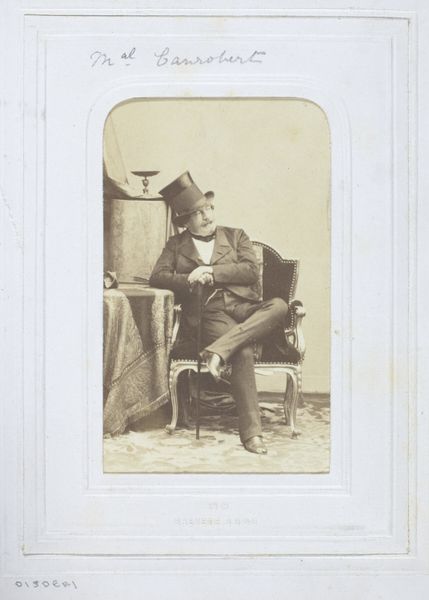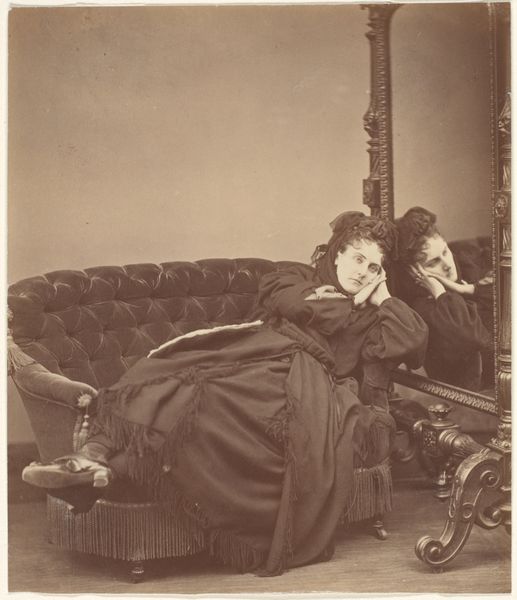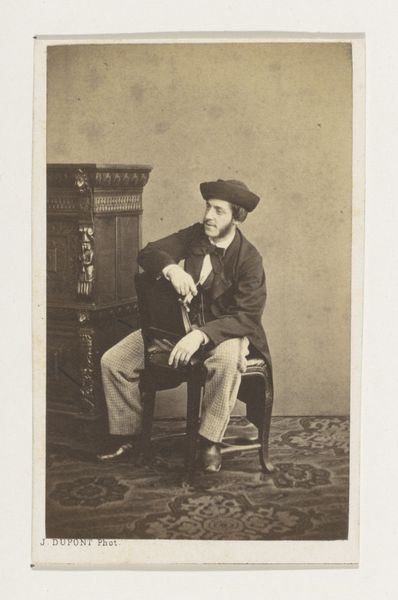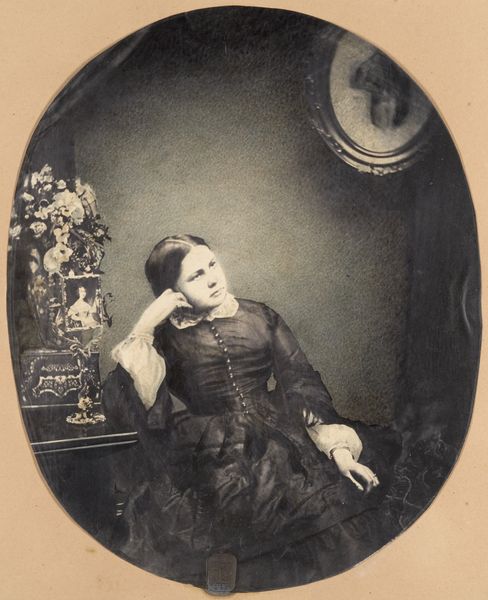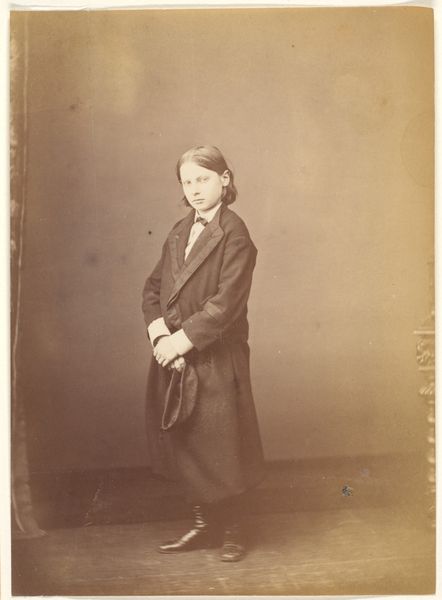
photography, gelatin-silver-print
#
portrait
#
photography
#
historical photography
#
gelatin-silver-print
#
realism
Dimensions: height 230 mm, width 224 mm
Copyright: Rijks Museum: Open Domain
Editor: This is Roger Fenton's "Studioportret van een onbekende jongen," a gelatin-silver print made sometime between 1852 and 1862. The portrait has a contemplative air. I find the arrangement of shapes to be well balanced. How do you interpret this work? Curator: The tonal gradations, achieved through the gelatin-silver process, are key here. Notice how Fenton uses a limited range of values to create a sense of depth. The textures, from the velvet chair to the boy’s clothing, each receive subtle differentiation. Does this control enhance its expressive content, in your opinion? Editor: I agree. The contrasts really make him pop. The details on the chair, though subtle, adds a lot of depth, but it isn't distracting. He seems very real to me, even though he's posed. Why would Fenton focus so heavily on such textural detail and muted contrast in this type of work? Curator: The meticulous attention to textural detail and restrained contrast could serve to emphasize the boy's individual presence while underscoring the material realities of Victorian life. Consider, as well, how the subdued lighting flattens the space, drawing attention to the formal elements rather than anecdotal narrative. Notice that. It focuses our view to form and line within. What overall effect might such a focus have on a viewer? Editor: That's a really interesting way to put it! It brings the portrait to life with form and texture. I really thought it was the narrative, but seeing how the textures combine makes a big difference. Curator: Precisely. Formal choices generate their own meaning, separate from any narrative impulse. Keep observing—you'll discover new insights constantly.
Comments
No comments
Be the first to comment and join the conversation on the ultimate creative platform.
